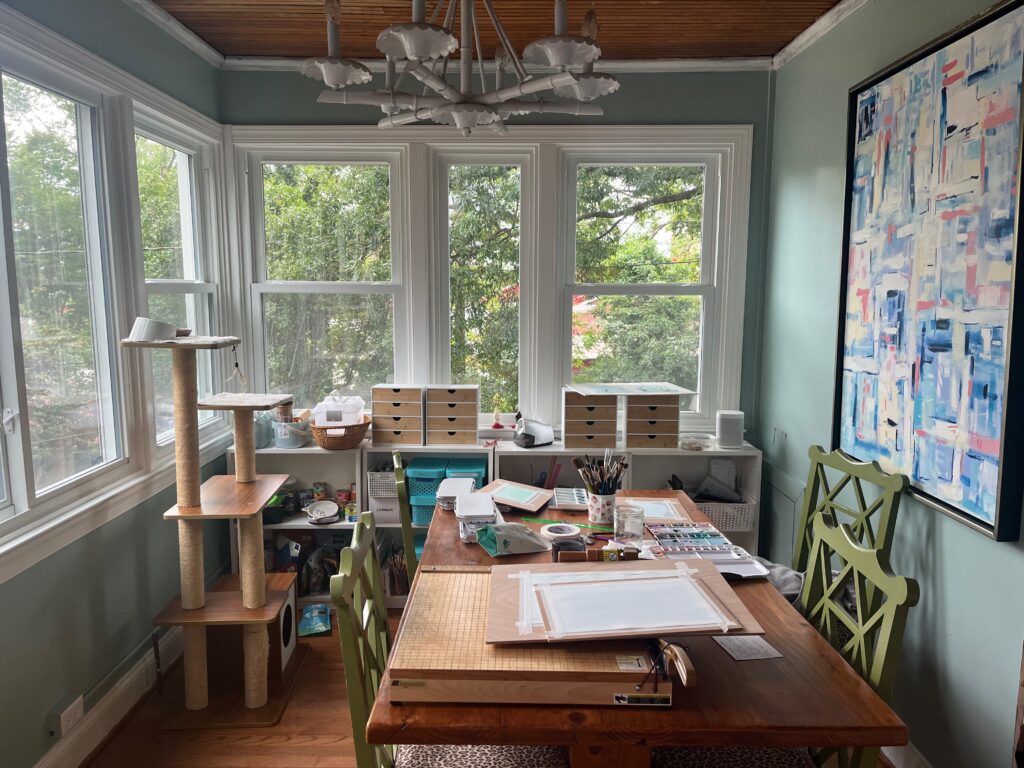
A friend of mine who is also a designer said to me several years ago about someone else’s project, “It was a total mess. Visible cords everywhere.”
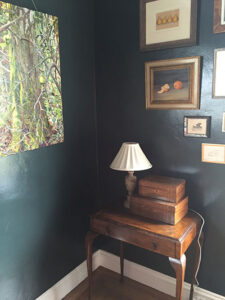
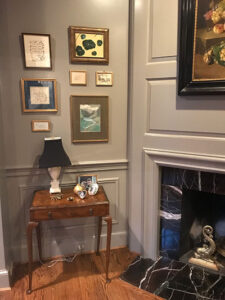
Heheh. Please note these two pictures above that I have been cringing about ever since. I could edit it out for portfolio purposes but I am in some ways glad I haven’t, since it’s a nice little illustration.
How do we avoid this? One of the typical ways is simply by putting the cord behind a piece of solid case furniture. Or stowing a footstool under the table to block it. But what if you can’t?

And what about this one, the glass table? Mama mia. Perhaps I could mitigate the brownness of it all by rewiring with clear wire as seen here (the lamp stores call it silver for what it’s worth).
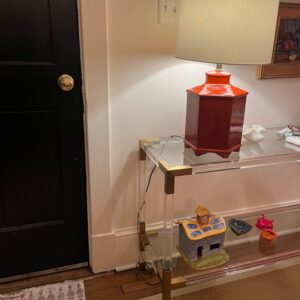
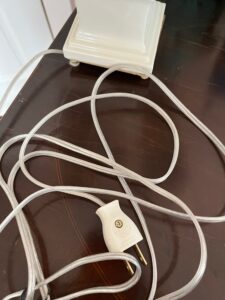
But the other answer is simply using these tiny command hooks to anchor the cord to the back of the table, and snaking it down the leg. Even when it’s clear like this, so are the command hooks, but the cord is still brown. Thus, the rewiring, which is one of those cobbler’s kids going shoeless types of answers.
With those tiny spindly-legged wooden tables, the command hook solution doesn’t work too well. Enter technology!
I live in a house that was built in 1920. In my dining room, there are three doorways and one outlet in one corner that sits between two of those doorways. I have snaked an extension cord (white at least) around from another room for the lamp on the bar.
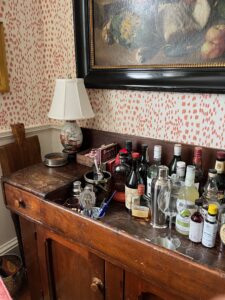
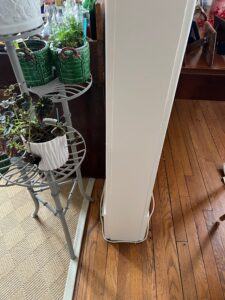
And on the other side, these two Imari candle lamps have…rechargeable lightbulbs in them.
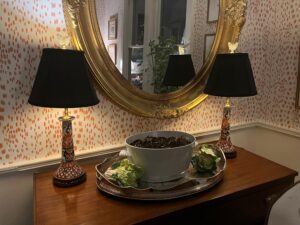
They have three settings and recharge in the wall. You can even use them as a flashlight if the lights go out.
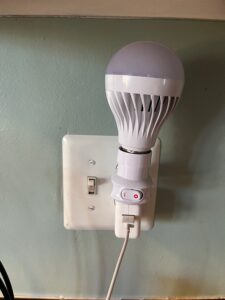
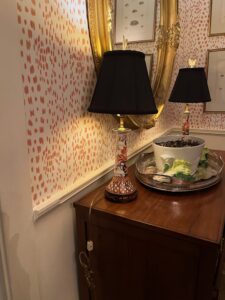
See? The cords are just tied up and stowed behind the chest. These guys are on an old exterior wall, so a new outlet could go in the floor, but sometimes you don’t have good options for retrofitting a house. What if your house sits on a concrete slab?
I will say that the rechargeable bulbs are not great for task lighting, but great for mood lighting. They aren’t terribly bright and can run out of juice quickly at the higher setting, but this is the price you pay for not getting your electrician out to run more outlets for you.
What do you do when you have a sofa table in the middle of the room? Many houses have outlets in the floor for this purpose, but those outlets dictate where you can put your sofa. Also, what if you have a rug? If you have a loosely-woven seagrass, you can snake it through the weave, but otherwise, you probably shouldn’t be punching holes in your rug. I think the rechargeable lightbulbs are good for that situation, too.
For what it’s worth, I’m not talking about the charging and office equipment situation, like this picture I took as I was sitting here typing. It’s my router, mesh system, printer, charging cords, and shredder. That’s a whole other problem, and one that probably warrants a whole other blog post.
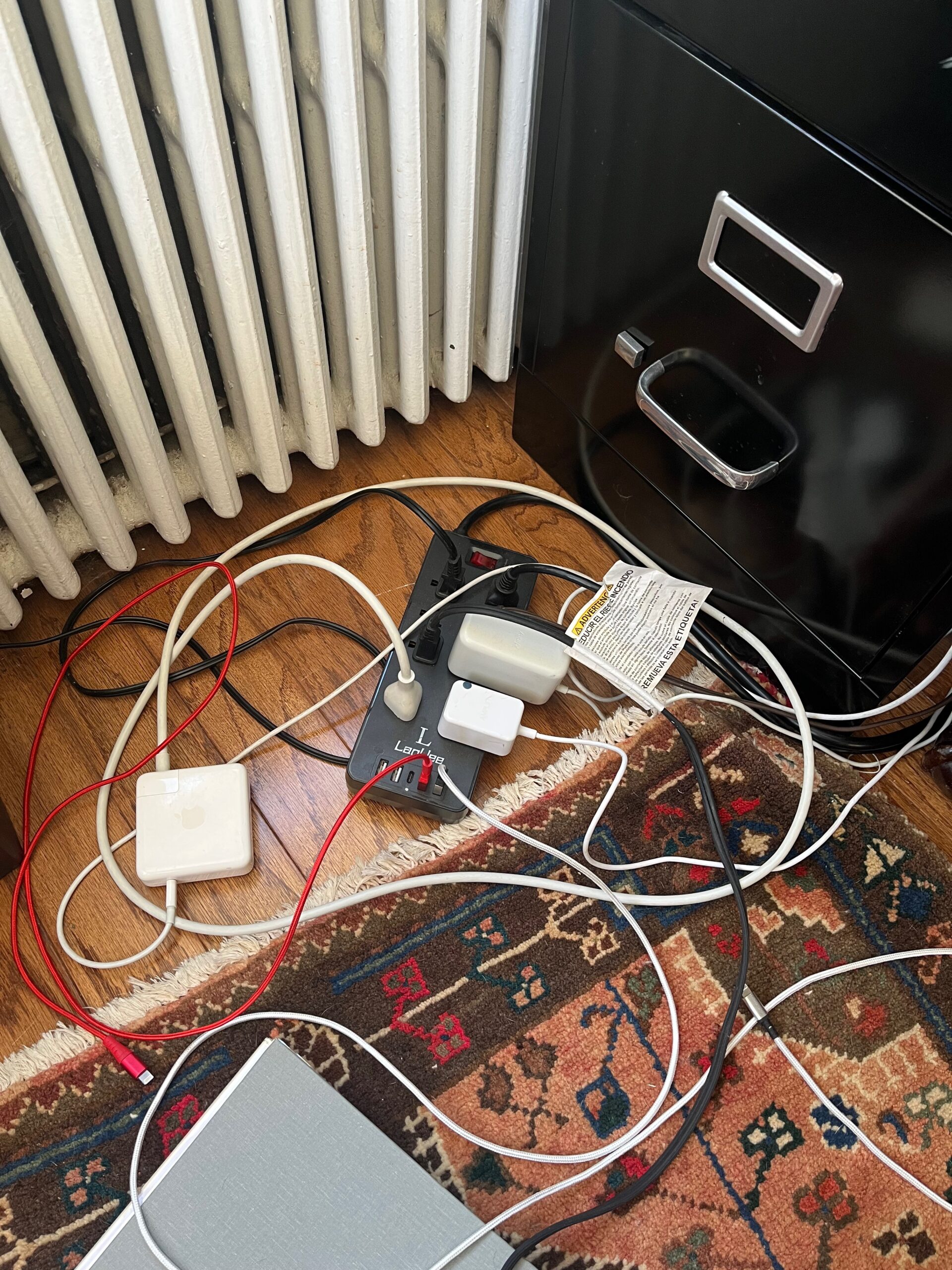
Some people use these little cord garages, which I should consider for my office. There are little tabs I could use for labeling the cords, and those Velcro doohickeys that keep everything nicely coiled. See, I have some, but mine aren’t as good as the ones in the link which is maybe why I haven’t used them.
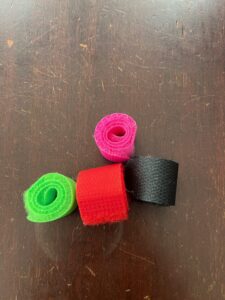
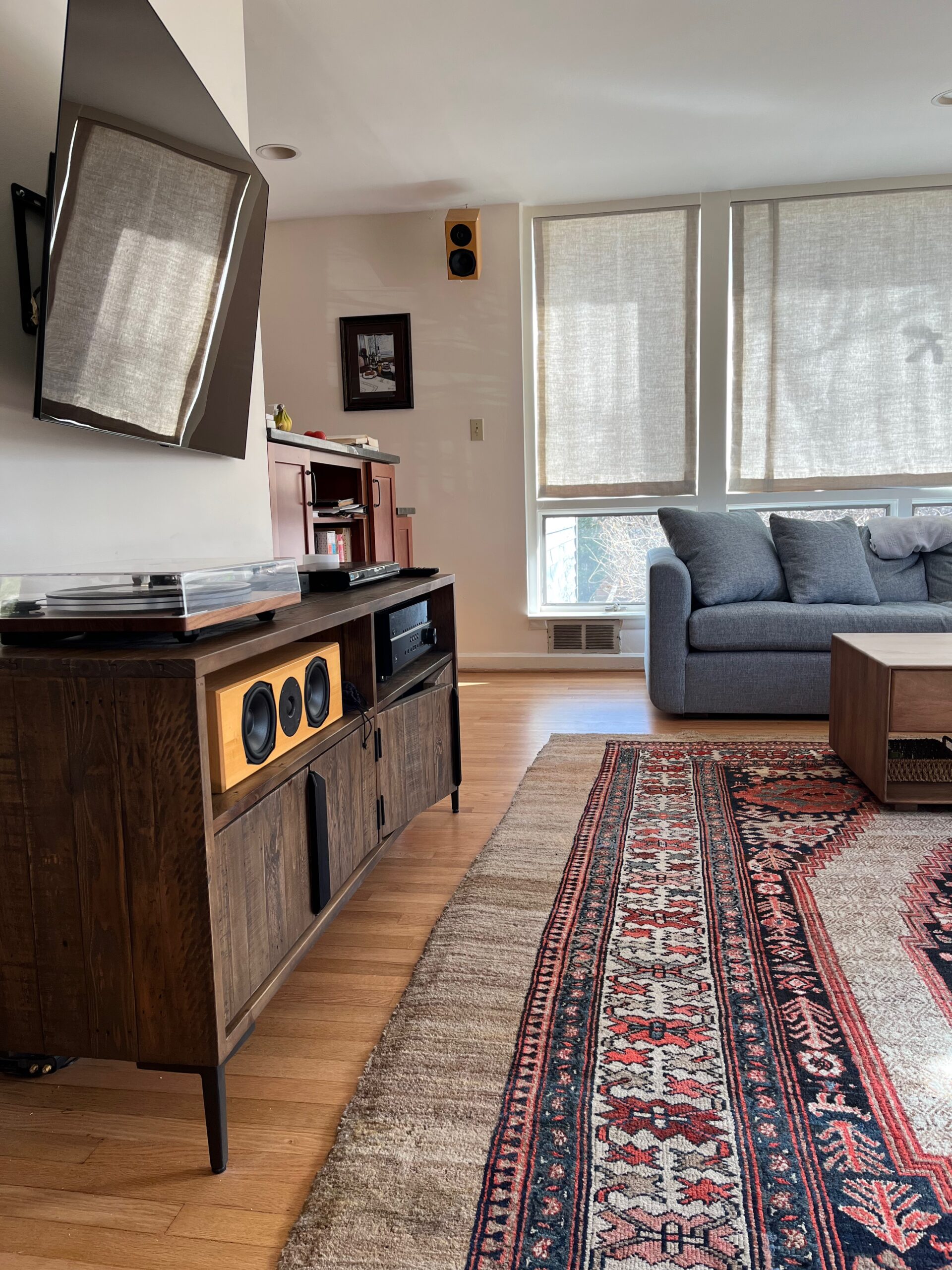
I think the AV is another problem, and maybe we can talk about that in a “part 2” on tech, but as I have searched for tv stands for clients, I have noticed that a lot of them have a whole separate section and carve-outs for the cords. We are all very busily thinking about this, it seems!
This one, for example, had a whole cord section that looked like the rest of the cabinet. I’ve even seen tables that plug into the wall and have a little hidden drawer with charging ports in them. Brilliant!
Anyway, as I say, this is a whole separate topic. And unfortunately, on this snow day, I have had a hard time finding good pictures of stowed footstools and lamp cords, but maybe that means I should spend less time cringing about my lamp problems, after all.



